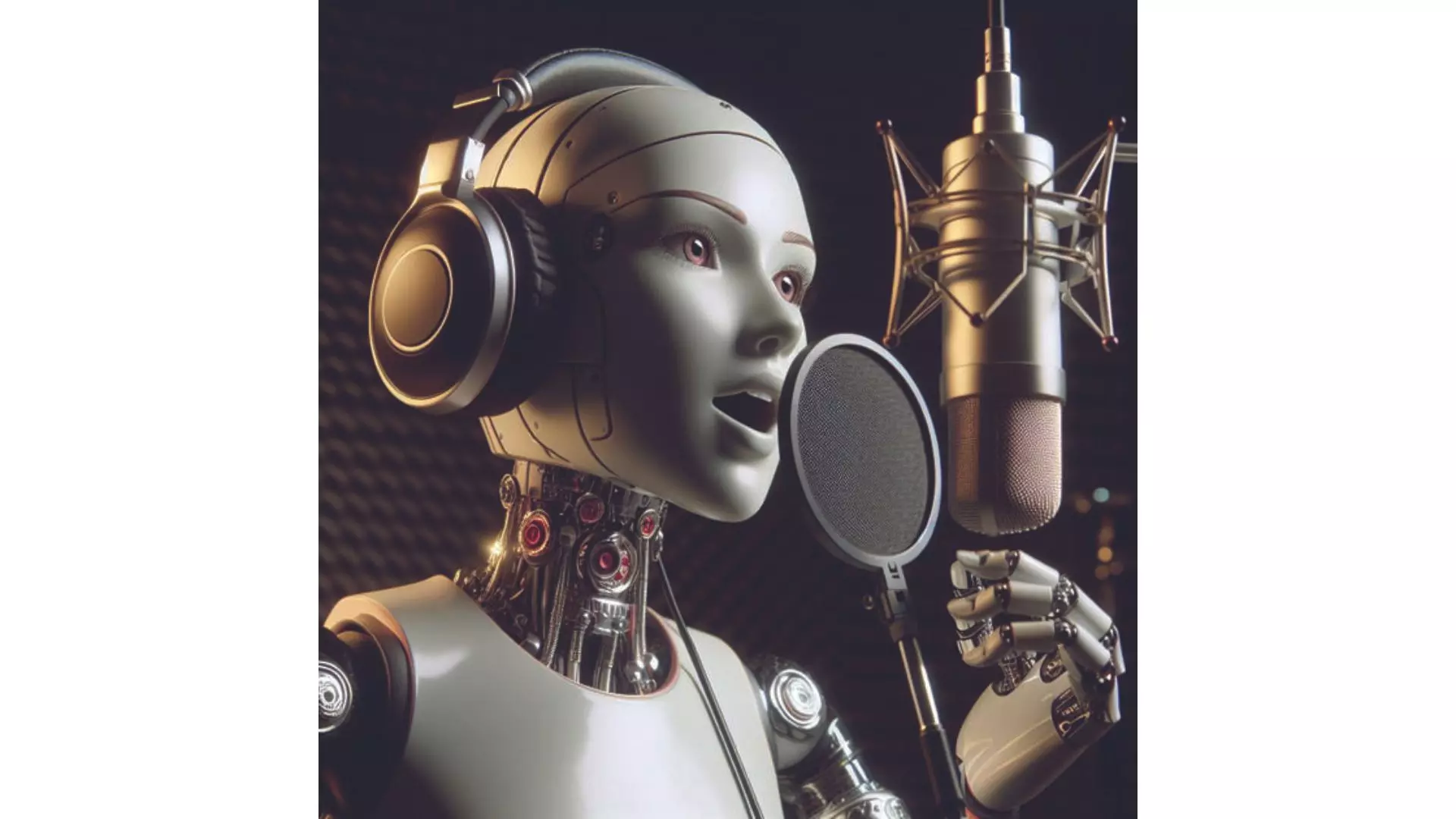Voice-Over Artists Fear AI Invasion

Voice artists are actors with the face value of their ‘voice’. Whether it is Goku’s signature attack Kamehameha in the DragonBall series or dubbing Harry Potter’s voice in any regional language, voice artists give life to a character, creating its identity and a personality to be remembered for eternity. However, the invasion of AI in this industry is giving many voice artists sleepless nights over job security. While AI has impacted narration, commentary, and announcement voice-over, its influence on voice acting remains limited.
A Behind-the-Scenes Look
Voice artists fully embody the characters they portray, infusing them with personality, emotion, and depth. They craft unique voices, mannerisms, and personalities for each role. Through mastery of vocal techniques like pitch modulation and tone variation, they skillfully convey emotions and breathe life into characters. Sanket Mhatre (40), a renowned voice-over artist, lent his deep, gritty voice to dub Robert Pattinson’s The Batman, and transformed into a teenager’s voice for Ben Tennyson in the cartoon series Ben 10. Not only the main protagonist, Sanket modulated his voice for all the 11 aliens in Ben 10. He joyously says, “I am still a fanboy who collects action figures and reads comic books. It gives me immense joy that I can voice different characters.” Amongst his plethora of celebratory work are dubs for Deadpool, Sasuke from Naruto, Shazam, Bear Grylls for Man Vs Wild, and even the Batman animated series.
Priya Adivarekar, founder and creative director of Diary of a Dancebee, who joined the world of voice acting at the age of 8 and has been in the industry for two decades says, “The experience of portraying different characters, experimenting with dialects and tonality, exploring new cultures is like being a new person every day. The most exciting challenge is expressing solely through your voice and I thoroughly enjoy every bit of it.” Priya is the Hindi voice for Disney’s Bolt (voice of Penny, originally voiced by Miley Cyrus), Cars 3 (voice of Cruz Ramirez) and Black Panther: Wakanda Forever (voice of Shuri). She has also worked on the recently released animé series titled Tomo Chan is a Girl. Voicing for animé is an exciting experience. Sanket highlights that the price for a voice artist varies depending on time, the medium, and source of content etc. He says, “For secondary film characters, voice artists can earn between ₹ 5,000 to ₹ 50,000, while primary character roles can fetch up to lakhs, depending on the film’s budget and lead actor. Voice artists for OTT series typically earn between ₹ 5,000 to ₹ 20,000, with regional languages often having lower budgets than Hindi.”
The Game Changers
Predominantly, the subtitle vs dubbed audio debate is a long, unsettled battle. Those who favour subtitles may disdain those who prefer dubbed audio, viewing it as a loss of the content’s original essence. Sanket says, “People who could watch the movie in the original language and read the subtitles were never the audience. This debate comes from a privileged mindset. Regional language viewers often understand plots better due to simplification, creating inclusivity in discussions.” In the past, syncing was secondary, with focus on fitting a sentence. Now, meticulous syncing is prioritised, with scripts crafted for precise lip movements, even ending sentences with specific letters for better alignment. With the advent of OTT embracing regional cinema, foreign language content (predominantly in languages such as Japanese, Korean, Spanish and French) and anime, the voice acting industry has substantially benefited from the same. Mandeep Singh (25), a dubbing artist and founder of Senmon studio, says, “Currently in India, the dominating regional language is Hindi.
I have dubbed in Hindi and I cast voices for Punjabi language. Telugu, Tamil and Marathi are other languages where one sees dubbing of animated movies.” He has dubbed in Hindi for Shiva in the movie Bal Ganesha (all five parts), Sudama for the cartoon series Krishna and Bal Hanuman in Punjabi. Mandeep started dubbing in 2018 and improved his skills by learning from the videos of Sanket Mhatre. Dubbed content now has a separate fanbase, whereby enthusiasts on social media actively talk about voice actors and their work.
Invasion of AI
AI-generated voices can mimic human speech with startling accuracy, raising concerns about job displacement and the devaluation of human talent. However, the encroachment of AI is a double-edged sword. While AI tools can enhance productivity, there is a fear that AI could render their skills obsolete, relegating them to the sidelines in favour of automated alternatives. Mandeep says, “I have tried AI once for a female voice as I was struggling to arrange a female voice artist on short notice. The AI did a decent job of dubbing except it lacked in conveying emotions accurately.” People can easily get away with unauthorised use of an artist’s voice, and unfortunately, there is no legal recourse. Sanket says, “I know of voice-over-artists who had 10-15 projects on an average in a month, are now doing 1 or 2 projects a month. A lot of artists even get indirect requests for giving their voice samples to train AI models.” Priya highlights, “Our voices are our livelihood. The industry needs more uniform regulations, better transparency with clauses, restrictions, and usage rights (some can be very vague and may differ from project to project), and stronger action against unauthorised use. I have seen many artists facing issues with timely payments as only a few renowned studios have a professional approach towards management and operations.” Ultimately, the future of voice acting in India hinges on the delicate balance between technology and creativity. While AI may revolutionise certain aspects of the industry, it can never replicate the magic of a human voice.
The experience of portraying different characters, experimenting with dialects and tonality, exploring new cultures; it’s like being a new person everyday.” — Priya Adivarekar, Founder & Creative Director, Diary of a Dancebee

